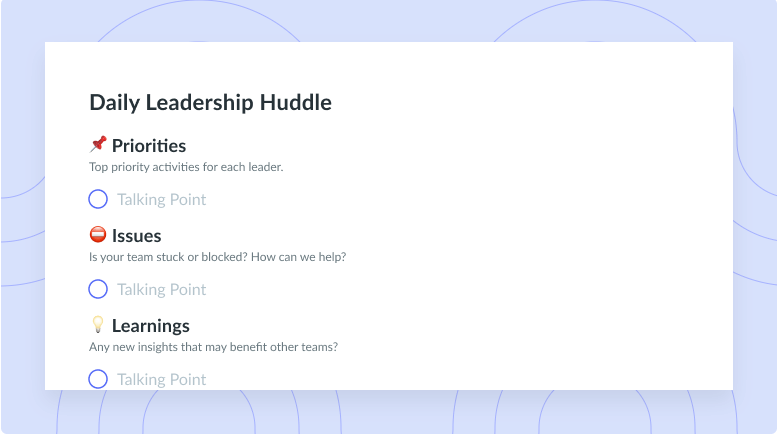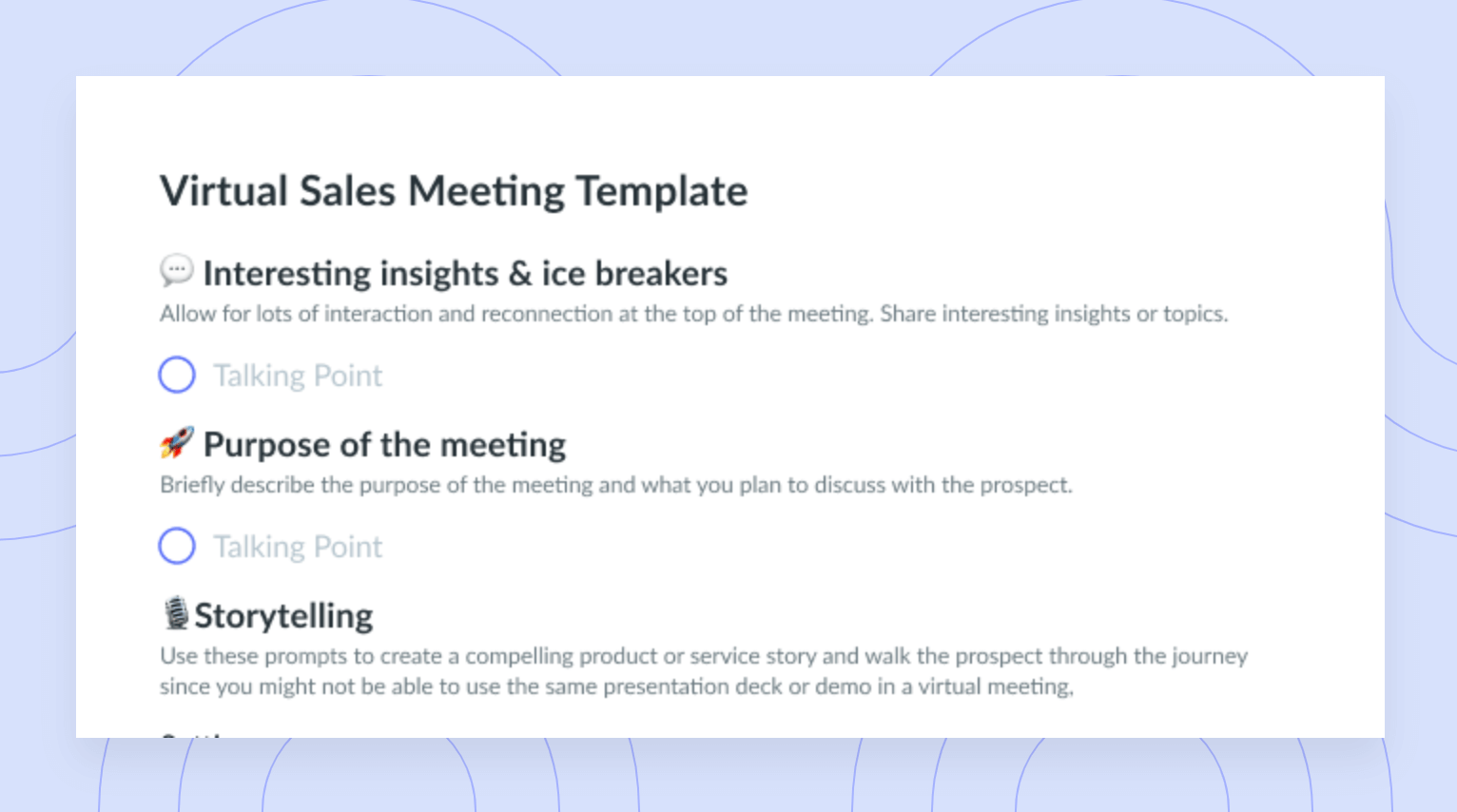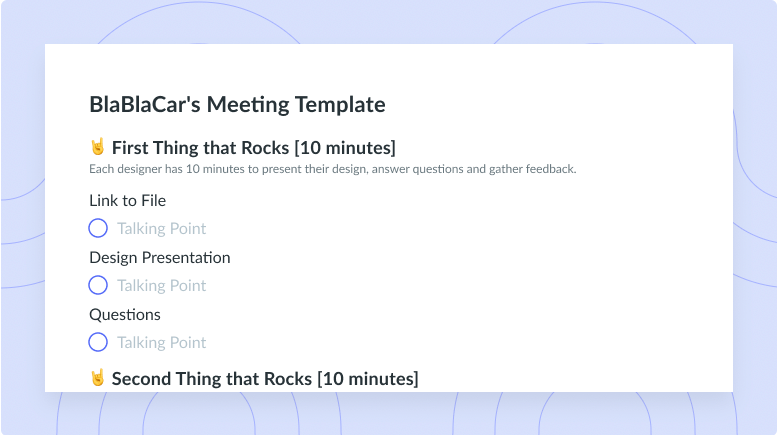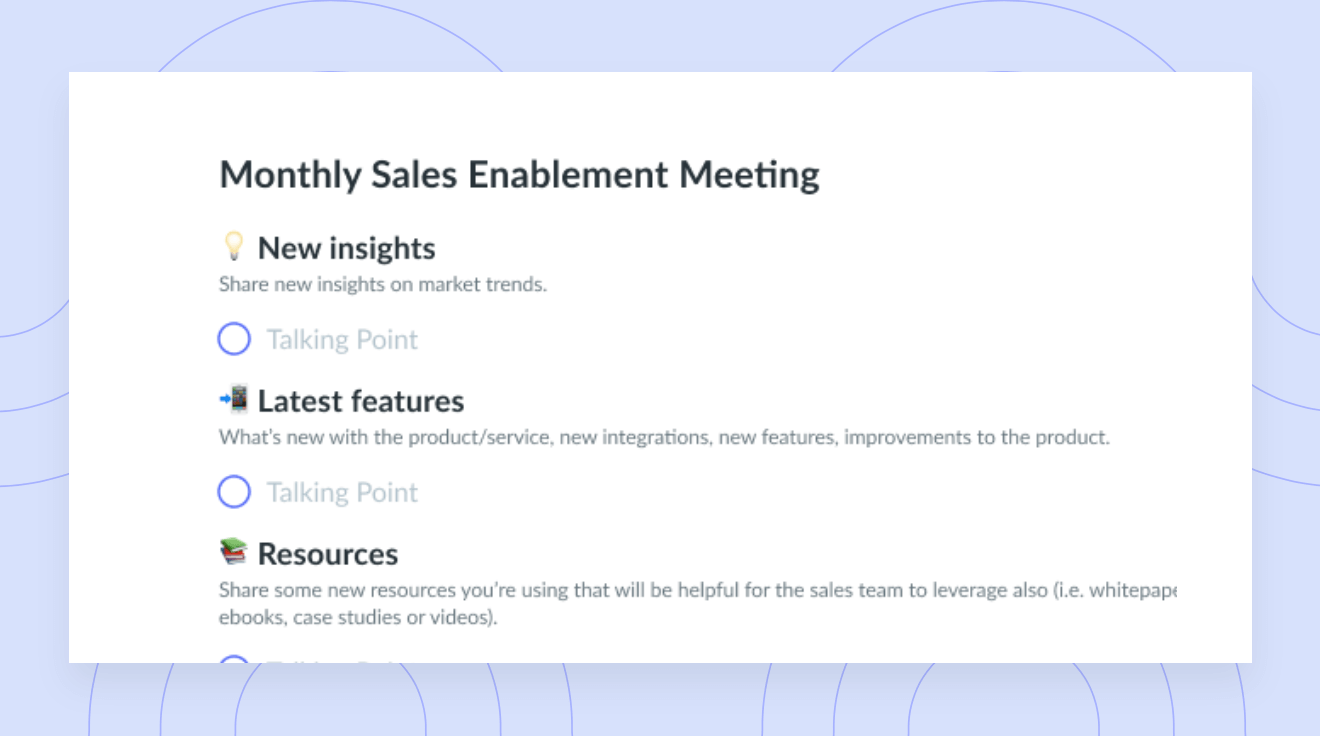10 Tips to Improve Nonverbal Communication in Virtual Meetings
Hone in on your leadership skills by mastering our 10 tips for nonverbal communication in virtual meetings.
Effective nonverbal communication is essential in a meeting environment. Not only does it demonstrate both confidence and competence, but it also aids in nurturing connections and strengthening working relationships. Honing in on your nonverbal communication skill during meetings is one of the most effective things you can do to level up as a manager or leader. In this article, we’ll dive into the importance of nonverbal communication in virtual meetings, while simultaneously covering tips and tricks you can leverage to be more attentive and professional.
- Importance of nonverbal communication in virtual meetings
- 10 tips for effective nonverbal communication
Importance of nonverbal communication in virtual meetings
Where words fail, body language prevails. Nonverbal cues made possible through various tactics (including facial expressions, eye contact, active listening, and body language) are important because they provide insight into one’s true feelings and intentions. During meetings, nonverbal communication allows participants to gauge reactions and understand feelings – oftentimes before any words are spoken.

Meetings worth showing up to
A well-run meeting can foster communication and collaboration by including an agenda the whole team can contribute to. Try using a tool like Fellow!

10 tips for effective nonverbal communication
- Keep your camera on the whole meeting
- Smile and nod as someone is speaking
- Keep eye contact with the speaker or audience
- Maintain good posture
- Dress appropriately
- Use your hands
- Don’t watch yourself
- Have an organized, distraction-free environment
- Silence your devices
- Write in the chat
1Keep your camera on the whole meeting
It can be nearly impossible to improve your nonverbal communication in virtual meetings if you don’t have your camera on. Leaving your camera on will give you and the others in attendance the opportunity to relay and receive nonverbal cues. Turning your camera on during virtual meetings also helps you stay present and attentive.
If you’re wary about turning your camera on because of your background, every form of video conferencing software has tools that make the process seamless: you can simply blur your background, or you can choose from one of many professional backgrounds to eliminate the added stress of worrying what may be behind you when you’re on camera.
2Smile and nod as someone is speaking
Mastering nonverbal communication tactics like smiling or nodding when someone is speaking is an extremely valuable skill set. In addition to turning your mic on and chatting where appropriate, you can also demonstrate that you’re on board by smiling and nodding when someone is speaking. Not only does this demonstrate that you’re in agreement with the speaker, but it also demonstrates that you’re paying close attention to what they’re saying.
3Keep eye contact with the speaker or audience
Eye contact is important in both face-to-face and virtual settings because it’s one of the quickest and most effective ways to build solid foundational relationships with other people. Maintaining eye contact demonstrates that you’re eager, engaged, and attentive. If you’re actively looking around the room or distracted by your surroundings, it may seem like you aren’t interested in what the meeting host has to say. If you don’t possess proper etiquette while meeting virtually, it may become extremely difficult for you to cultivate strong working relationships with your colleagues or clients.
4Maintain good posture
Posture is an often-underrated tactic when it comes to nonverbal communication. Nothing says bored or disengaged like someone who doesn’t sit up properly at their work station. If you’re slouching or leaning back inappropriately in your chair, you’ll come off as disengaged, uninterested, or even unprofessional. Sitting up straight, leaning in, and being attentive are all tactics you can use to have the opposite effect. These tactics will make it possible for you to exude confidence and professionalism.
5Dress appropriately
Whether you’re in the office or meeting virtually, dressing appropriately is very important. The way you dress and present yourself says a lot about you—especially in a professional setting—which is why you should always reference your organization’s dress code before attending an important meeting. Some dress codes are more lax, meaning opting for comfortable clothing or casual wear is acceptable. However, some require employees to dress more professionally. In both scenarios, you should adhere to the rules and put your best foot forward by following the dress code to the best of your ability.
6Use your hands
Nonverbal communication in virtual meetings is simple in the sense that many tactics you would leverage during in-person meetings can also be used during virtual meetings. Many people often underestimate the sheer power of using your hands during virtual meetings or in-person, human-to-human interactions. Research also suggests that talking with your hands lightens the cognitive load of speaking, meaning it becomes easier for you to convey your message and easier for the recipient to absorb your message. If you’re talking about something abstract, conceptual, or strategic, using your hands as nonverbal cues will make it easier for you to navigate and relay complex ideas.
7Don’t watch yourself
Making eye contact, using body language, and being professional, attentive, and engaging is basic Zoom etiquette, and you can’t do any of it if you’re focusing on yourself. Maybe employees or teammates fail to realize that other people notice when they aren’t being attentive or making eye contact, but if you’re looking at yourself in the camera, as much as you don’t think anyone else is noticing, they are. Not only is it evident through your inattentiveness, but it also becomes apparent when your teammates realize that you aren’t making eye contact or engaging with what they’re saying.
Not only is watching yourself a distraction for your teammates, but it’s also a major distraction for you. If you’re busy watching yourself in the corner of your screen, you may miss crucial information and as a result, you may not be up to speed or have what you need to move forward after the meeting.
8Have an organized, distraction-free environment
Nothing is worse than meeting with a colleague who attends the meeting from a chaotic environment. Think busy coffee shops, shared working spaces with children, or even just a public area that may not be optimized for virtual meetings. Not only does someone joining the meeting from a chaotic environment affect everybody else on the call, but it also serves as a major distraction for the person in the distracting environment. If you don’t have a quiet or calm environment in which you can dedicate yourself to your work, you won’t be able to be present in the meeting, and as a result, both your verbal and nonverbal communication may be ineffective.
9Silence your devices
Being active on other devices is one of the most disrespectful things you can do while you’re meeting. Many people feel as though they can get away with it when meeting virtually, but what they fail to realize is that other meeting attendees will often realize when their attention has been drawn elsewhere. Not only should you not be active on additional devices when meeting, but you should also make a point of silencing any devices that may be a distraction. Even if you don’t choose to pick up the phone call or answer the text, the ringtone may still distract you and everyone else on the call. Nonverbal communication is all about being present and attentive, and it can be nearly impossible to be engaged if your attention is directed elsewhere.
10Write in the chat
There are numerous ways to master nonverbal communication during meetings, and writing or participating in the chat are just a couple. Many people feel the need to unmute their mic and speak up during meetings. Although appropriate from time to time, speaking up may derail the conversation, and you may not even get the opportunity to share your opinion if the host is ready to move on to another talking point. A great way to combat this issue is by being active in the chat. Zoom and almost every other form of video conferencing software has some type of chat feature that enables users to send messages and chat back and forth during virtual meetings.
Nonverbal communication in meetings is extremely important
Mastering nonverbal communication in meetings is extremely important for a variety of reasons. Not only does it help you build and strengthen relationships, but it also helps you demonstrate your competence in the workplace. Whether you’re hosting a one-on-one meeting with your direct report or facilitating a cross-functional meeting with a panel of executives, these principles and tactics remain the same. Being present and attentive is important no matter with whom you’re meeting and these tips, tricks, and best practices will ensure you’re prepared to actively engage through nonverbal communication in your next meeting.
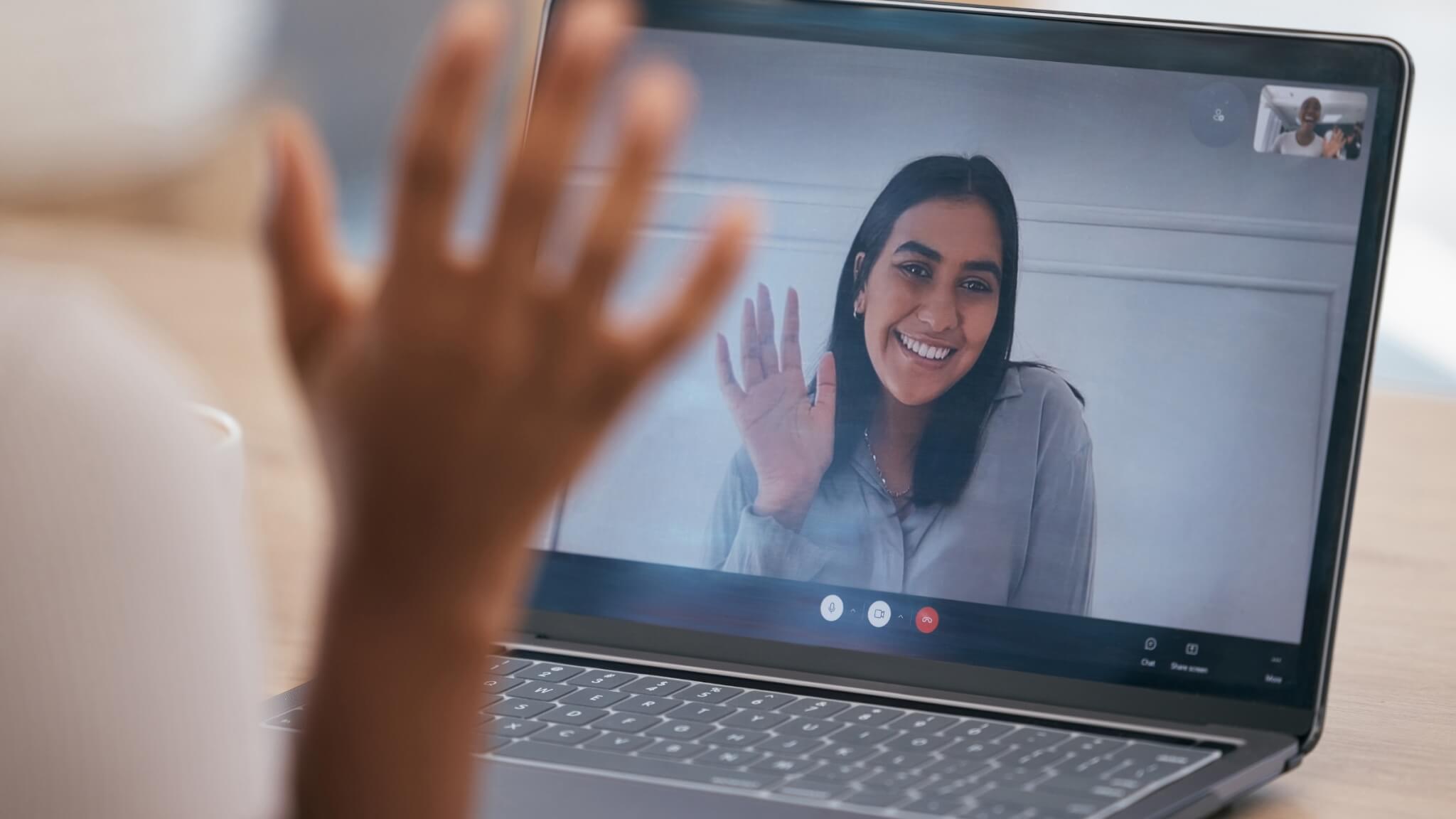


![11 Tips for Productive Virtual One-On-Ones [+ Free Template]](https://fellow.app/wp-content/uploads/2022/07/Productive-Virtual-One-On-One.jpg)





